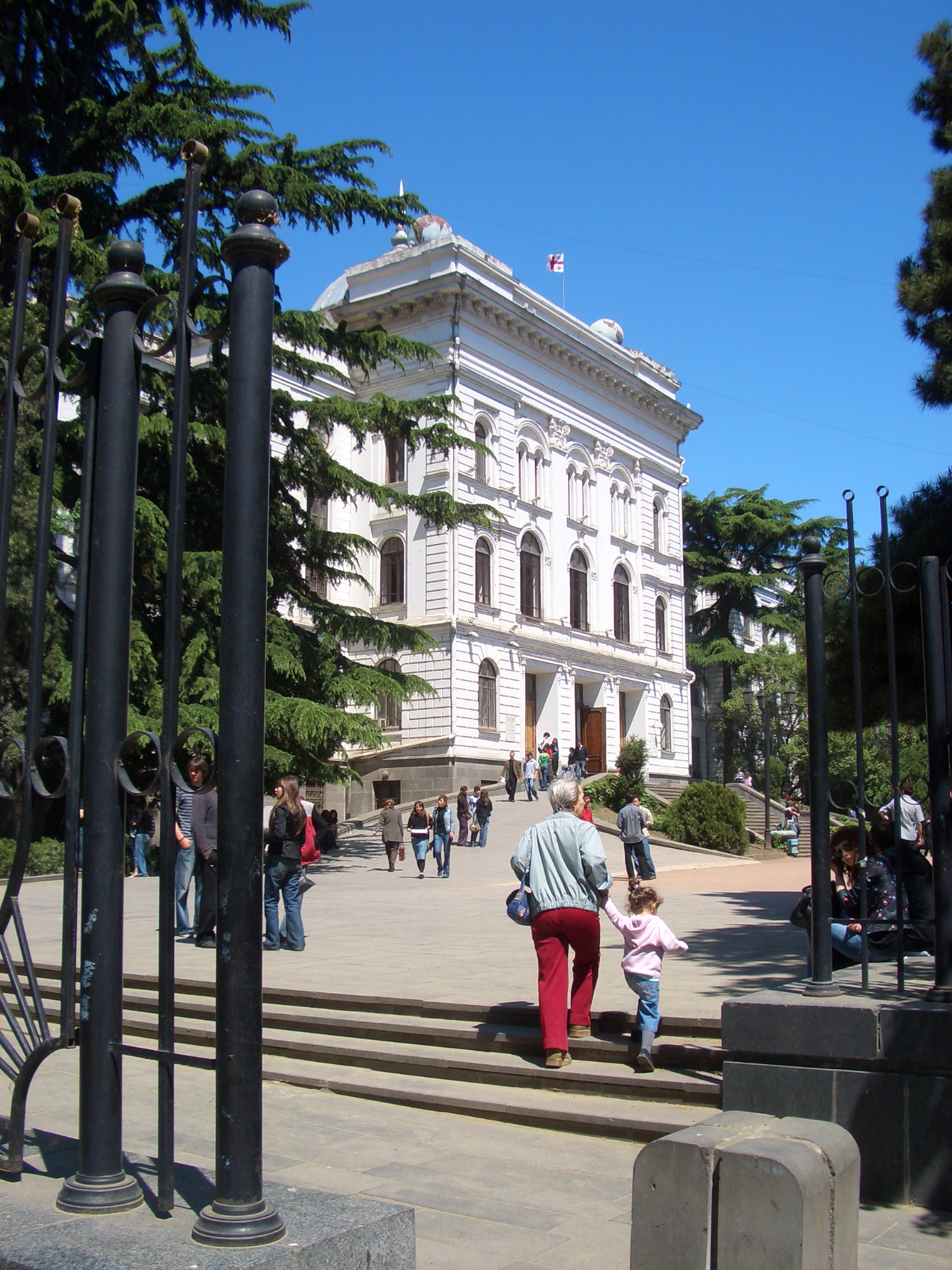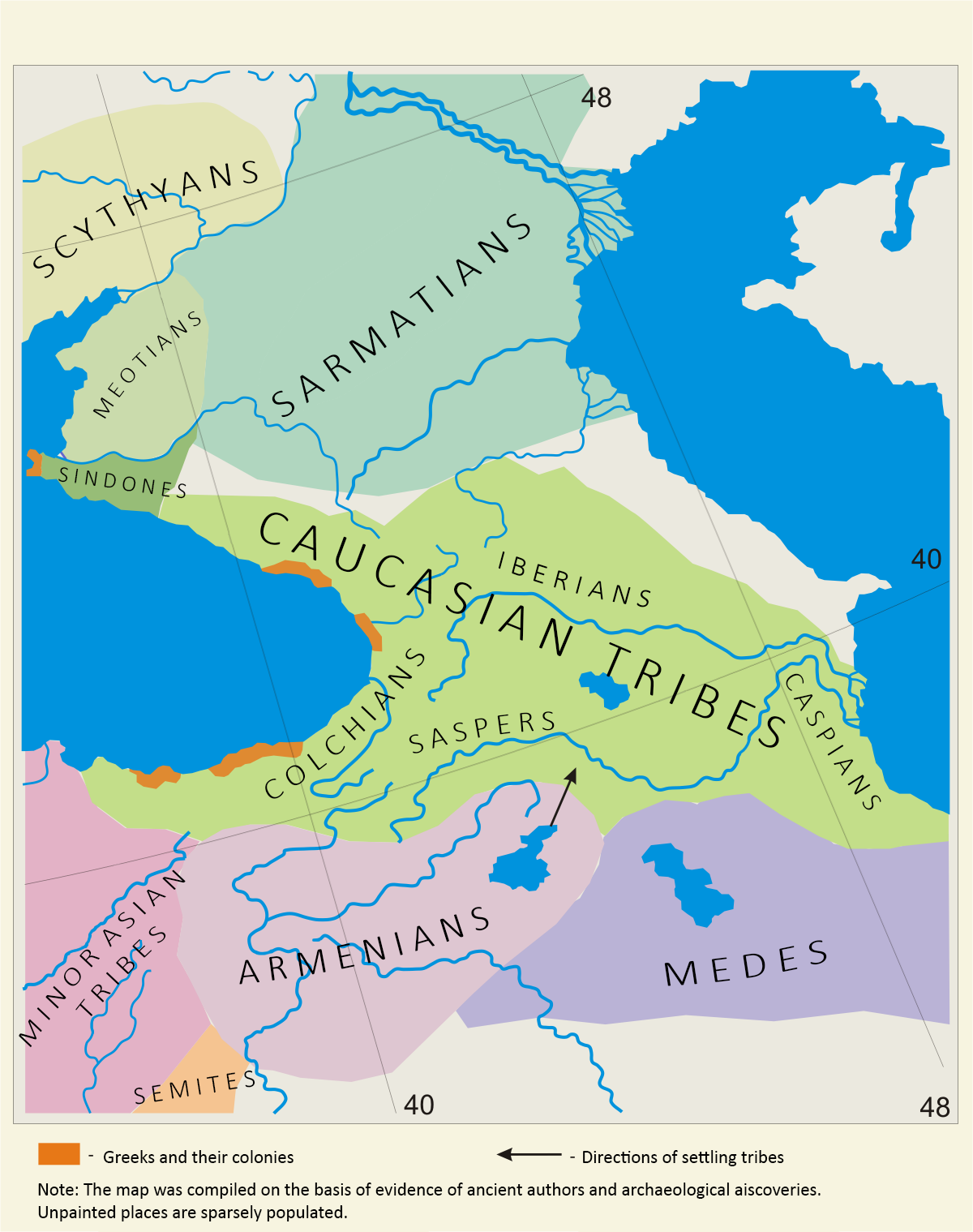|
Zemo Kartli
Zemo Kartli ( ka, ზემო ქართლი; lit. Upper Kartli or Upper Iberia) is a historical region in south-western Georgia, comprising the lands in the upper basin of the Kura River (from origins of Kura River to Tashiskari) and Chorokhi River basin, making it subregion of greater Kartli. Until 16th century, Zemo Kartli included: Samtskhe, Javakheti, Erusheti, Artaani, Kola, Klarjeti, Shavsheti, Tao and Speri. Literature * Javakhishvili, Ivane (1968), ''k'art'veli eris istoria'' (''The History of the Georgian Nation''), vol. 2. Tbilisi State University Press. * Muskhelishvili, David (1979), ''Georgian Soviet Encyclopedia The ''Georgian Soviet Encyclopedia'' ( ka, ქართული საბჭოთა ენციკლოპედია, ქსე) is the first universal encyclopedia in the Georgian language, printed in Tbilisi from 1965, the editor in chi ...'', vol. 4, pp. 511. Tbilisi. References {{Georgian historical regions Former provinces ... [...More Info...] [...Related Items...] OR: [Wikipedia] [Google] [Baidu] |
Region
In geography, regions, otherwise referred to as zones, lands or territories, are areas that are broadly divided by physical characteristics (physical geography), human impact characteristics (human geography), and the interaction of humanity and the environment (environmental geography). Geographic regions and sub-regions are mostly described by their imprecisely defined, and sometimes transitory boundaries, except in human geography, where Jurisdiction (area), jurisdiction areas such as national borders are defined in law. Apart from the Earth, global continental regions, there are also hydrosphere, hydrospheric and atmosphere, atmospheric regions that cover the oceans, and discrete climates above the land mass, land and water mass, water masses of the planet. The land and water global regions are divided into subregions geographically bounded by large geological features that influence large-scale ecologies, such as plains and features. As a way of describing spatial areas, the ... [...More Info...] [...Related Items...] OR: [Wikipedia] [Google] [Baidu] |
Artaani
Ardahan Province ( tr, , ku, Parêzgeha Erdêxanê, ) is a province in the north-east of Turkey, bordering Georgia and Armenia. The provincial capital is the city of Ardahan. Demographics With 94,932 inhabitants in 2021, Ardahan was the third least populated city after Bayburt and Tunceli in Turkey. Ardahan Province is populated by Azerbaijanis, Kurds and Turks. However, the area was heterogeneous prior to World War I and the Armenian genocide. In 1886, 43,643 people lived in Ardahan Vilayet of which was Turkish, was Kurdish, Qarapapaq, Greek, Turkmen, Russian and Armenian. The town of Ardahan had a population of 778 of which was Turkish, Russian, Armenian and Greek. In the 1897 Russian Empire Census, Ardahan okrug had a population of 65,763 of which was Turkish, Kurdish, Qarapapaq, Greek, Turkmen and Armenian. Slavs constituted of the population. The town of Ardahan had a population of 4,142 of which was Slavic, Armenian, Turkish and Greek. In 1908 ... [...More Info...] [...Related Items...] OR: [Wikipedia] [Google] [Baidu] |
Former Provinces Of Georgia (country)
A former is an object, such as a template, gauge or cutting die, which is used to form something such as a boat's hull. Typically, a former gives shape to a structure that may have complex curvature. A former may become an integral part of the finished structure, as in an aircraft fuselage, or it may be removable, being using in the construction process and then discarded or re-used. Aircraft formers Formers are used in the construction of aircraft fuselage, of which a typical fuselage has a series from the nose to the empennage, typically perpendicular to the longitudinal axis of the aircraft. The primary purpose of formers is to establish the shape of the fuselage and reduce the column length of stringers to prevent instability. Formers are typically attached to longerons, which support the skin of the aircraft. The "former-and-longeron" technique (also called stations and stringers) was adopted from boat construction, and was typical of light aircraft built until the adv ... [...More Info...] [...Related Items...] OR: [Wikipedia] [Google] [Baidu] |
Georgian Soviet Encyclopedia
The ''Georgian Soviet Encyclopedia'' ( ka, ქართული საბჭოთა ენციკლოპედია, ქსე) is the first universal encyclopedia in the Georgian language, printed in Tbilisi from 1965, the editor in chief of which was Irakli Abashidze. The encyclopedia consists of 11 alphabetic volumes and a 12th exclusively dedicated to the Georgian SSR, printed in both Georgian and Russian. Sources * R. Metreveli, ''Georgian Soviet Encyclopedia'', X, p. 483, Tbilisi, 1986 See also * ''Great Soviet Encyclopedia The ''Great Soviet Encyclopedia'' (GSE; ) is one of the largest Russian-language encyclopedias, published in the Soviet Union from 1926 to 1990. After 2002, the encyclopedia's data was partially included into the later ''Bolshaya rossiyskaya e ...'' National Soviet encyclopedias Georgian Soviet Socialist Republic Georgian-language encyclopedias 20th-century encyclopedias {{Encyclopedia-stub ... [...More Info...] [...Related Items...] OR: [Wikipedia] [Google] [Baidu] |
David Muskhelishvili
David Levan Muskhelishvili (born October 19, 1928) in Tbilisi, Georgia. A member of the Georgian National Academy of Sciences. An academic of Georgian history, David Muskhelishvili is the nephew of the late Georgian-French political scientist and jurist Michel Mouskhely. Educated at Tbilisi State University, earned his degree in History in 1952. In 1956 he became a doctoral candidate of Historical Sciences as be begun his work as a junior research worker at Ivane Javakhishvili Ivane Alexandres dze Javakhishvili ( ka, ივანე ჯავახიშვილი; 23 April 1876 – 18 November 1940) was a Georgian historian and linguist whose voluminous works heavily influenced the modern scholarship of the history ... Institute of History until 1960. Then from 1960 - 1967 David Muskhelishvili became a senior research worker at the same Institute. Through his rigorous work he was promoted to Head of the Department of History in 1967, all the while working on his Docto ... [...More Info...] [...Related Items...] OR: [Wikipedia] [Google] [Baidu] |
Tbilisi State University
Ivane Javakhishvili Tbilisi State University ( ka, ივანე ჯავახიშვილის სახელობის თბილისის სახელმწიფო უნივერსიტეტი ''Ivane Javaxishvilis saxelobis Tbilisis saxelmts'ipo universit'et'i'', often shortened to its historical name, Tbilisi State University or TSU) is a public research university established on 8 February 1918 in Tbilisi, Georgia. Excluding academies and theological seminaries, which have intermittently functioned in Georgia for centuries, TSU is the oldest university in Georgia and the Caucasus region. Over 23 500 students are enrolled and the total number of faculty and staff (collaborators) is 5,000. According to the U.S. News & World Report university rankings, TSU is ranked 398th in the world, tied with the University of Warsaw. The university has five branches in the regions of Georgia, six faculties, 60 scientific-research laboratories and centers, a ... [...More Info...] [...Related Items...] OR: [Wikipedia] [Google] [Baidu] |
Ivane Javakhishvili
Ivane Alexandres dze Javakhishvili ( ka, ივანე ჯავახიშვილი; 23 April 1876 – 18 November 1940) was a Georgian historian and linguist whose voluminous works heavily influenced the modern scholarship of the history and culture of Georgia. He was one of the founding fathers of the Tbilisi State University (1918) and its rector from 1919 to 1926. Biography Ivane Javakhishvili was born in Tbilisi, Georgia (then part of Imperial Russia) to the aristocratic family of Prince Alexander Javakhishvili, who served as an educator at the Tbilisi Gymnasium. Having graduated from the Faculty of Oriental Studies of the St. Petersburg University in 1899, he became a ''privat-docent'' of the Chair of Armenian and Georgian Philology at his alma mater. From 1901 to 1902, he was a visiting scholar at the University of Berlin. In 1902, he accompanied his mentor, Academician Nikolai Marr, to Mount Sinai where they studied medieval Georgian manuscripts (such as the Ge ... [...More Info...] [...Related Items...] OR: [Wikipedia] [Google] [Baidu] |
Speri (region)
Speri, also known as Sper ( ''Sber'' or ''Sper'', ka, სპერი ''Speri''), is a historical region now part of the Eastern Anatolia region of Turkey. It was centered in the upper reaches of the valley of the Çoruh River, its probable capital was the town of İspir, or Syspiritus as indicated on the map next to the Byzantine-Sassanid border, and it originally extended as far west as the town of Bayburt and the Bayburt plains. Origin Sper was a part of ancient confederation Hayasa-Azzi on lands of Armenian Highland, in 2nd millennium BC.A History Of Georgia. Tbilisi: Artanuji Publ., 2014. The name Speri is thought by some to be derived from Saspers. According to the most widespread theory, they are a Kartvelian tribe.Mikaberidze, Alexander. Historical Dictionary Of Georgia. Lanham, Md.: Scarecrow Press, 2007. However, their origins have also been attributed to Scythian people. History Antiquity In 2nd millennium BC on lands of Sper was an ancient confederation Hayasa- ... [...More Info...] [...Related Items...] OR: [Wikipedia] [Google] [Baidu] |
Tao (historical Region)
Tao ( ka, ტაო) is a historical Georgian district and part of historic Tao-Klarjeti region, today part of the Eastern Anatolia region of Turkey. Its name derives from the ancient proto-Georgian inhabitants of this area, known as Taochi. History Antiquity The history of Tao could be traced to the emergence of the tribal confederation of Diauchi (Taochi, Tayk, Taochoi, Tao) at 12–8th century BC. Diauchi was engaged in war with the powerful kingdom of Urartu, and the inscriptions of the Urartu kings Menua ( 810–786 BC) and Argishti ( 786–764) reveal the wealth and power of this kingdom, which was possibly proto-Georgian speaking.A. G. Sagona. ''Archaeology at the North-East Anatolian Frontier'', p. 30. In the 8th century BC, Diauchi was destroyed by the neighboring Colchis and Urartu and part of its territory was annexed by the Colchis. In the 4th-3rd centuries BC region was organized into a province of the Iberian Kingdom. The region was bitterly contested by the ... [...More Info...] [...Related Items...] OR: [Wikipedia] [Google] [Baidu] |
Klarjeti
Klarjeti ( ka, კლარჯეთი ) was a province of ancient and medieval Georgia, which is now part of Turkey's Artvin Province. Klarjeti, the neighboring province of Tao and several other smaller districts, constituted a larger region with shared history and culture conventionally known as Tao-Klarjeti. Early history Klarjeti, traversed by the Chorokhi (Çoruh), stretched from the Arsiani Range westwards, towards the Black Sea, and was centred in the key fortified trading town of Artanuji (now Ardanuç). It was bordered by Shavsheti and Nigali on the north, and Tao on the south. The region roughly corresponds to Cholarzene ( grc, Χολαρζηνή, Καταρζηνή) of Classical sources and probably to Kaţarza or Quturza of the earlier Urartian records.Toumanoff, Cyril (1967). ''Studies in Christian Caucasian History'', p. 442. Georgetown University Press. Klarjeti was one of the south-westernmost provinces of the Kingdom of Iberia, which appeared on the Cauca ... [...More Info...] [...Related Items...] OR: [Wikipedia] [Google] [Baidu] |
Kola (historical Region)
Kola may refer to: People * Koła, a Polish noble family * Kola people, Gabonese pygmies * Kola or Kula people (Asia) of Cambodia and Thailand * Gyele people, also known as the Kola, Cameroonian pygmies * Rodgers Kola (born 1989), Zambian footballer Places * Kola Peninsula, a peninsula in the far north of Russia * Kola Bay, also known as Kola Inlet, a fjord in Murmansk Oblast, Russia on the Kola Peninsula * Kola (river), a river in Murmansk Oblast, Russia on the Kola Peninsula * Kola, Russia, a town in Murmansk Oblast, Russia on the Kola Peninsula * Kola, alternative name of Kula, Iran, a village in East Azerbaijan Province * Kola (historical region), part of the Georgian Tao-Klarjeti principalities, the contemporary Turkish district Göle * Kola Island, one of the Aru Islands of Indonesia * , in southwestern Sri Lanka * Kola, Mali * Kola, Manitoba, Canada * Kola, Hooghly, a census town in West Bengal, India * Kola (Goražde), a village in Bosnia and Herzegovina * Kola (Sou ... [...More Info...] [...Related Items...] OR: [Wikipedia] [Google] [Baidu] |





